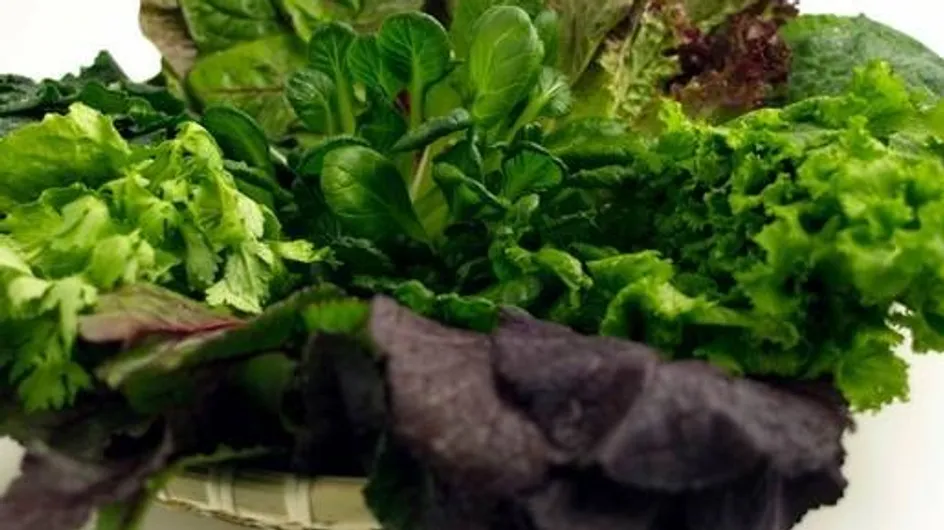Nutritional focus
Salad is 92% water and low in calories (just 13 calories per 100g)! The remaining 8% contains vitamins from all the groups, minerals, oligo-elements and chlorophyl (an excellent antioxidant). Nutritionally, the very green leaves on the outside are the best as they contain a high level of Vitamin C, Provitamin A and chlorophyl.
Preservation
Keep your salad in the fruit and vegetable container in your fridge. Some types are more resistant than others, but you shouldn't usually keep a salad for more than 3 days, after which it loses its freshness and flavour. For optimum freshness, put your salad in a freezer bag without closing it to let the leaves breathe. Don’t freeze salad leaves or they will turn into soup!
Preparation
Always wash your salads carefully to eliminate all traces of dirt. Separate the leaves, throw away any that have wilted and cut off the damaged parts. Dip your salad in vinegared water, stir well then rinse with clear water. Don't leave it in water for too long or it will lose nutrients. Drain with a salad spinner. Never dress your salad in advance - make your dressing but let the salad drain until it's time to eat.
Types of salad
Iceberg and batavia aren't the only types out there. There are many types, the two main families being chicory and lettuce. Mesclun isn't a type of salad but a mixture of rocket, lamb's lettuce, lettuce, endives and other leaves.
Salad
Charateristics and flavour
Preparation
Iceberg
Popular lettuce used in mixed salads and garnishes, with pale green crunchy leaves.
Cut the base out with a sharp knife, wash well, spin and tear or chop.
Batavia
A variety of lettuce. Green to red leaves, crunchy and tender, slightly sweet. The heart is light green or yellow green.
Choose one with a good white base. Can be enjoyed raw or cooked, in salads or braised.
Watercress
Grows in damp ground. Has small thick thick and a slightly sour taste.Don’t eat wild watercress: it could contain a parasite that causes severe liver disease.
Make sure you wash watercress well before eating it, ideally with a dash of vinegar in the water. Can be eaten in salads, soups, chopped like parsley or like spinach.
Chicory or endive
The bud is eaten and is white to pale yellow in colour. Has a bitter taste.
Keep away from light. Can be eaten raw or cooked, in salads and as a vegetable. Goes well with walnuts, apples and blue cheese.
Oak leaf
A variety of lettuce. Can be distinguished by its crunchy and firm leaves in the shape of oak leaves. Comes in red and green.
Eaten raw or cooked (braised or stuffed). Goes very well with walnuts.
Curly endive
A variety of endive. Its leaves are green and curly, it is bitter and is grown mainly in summer and in autumn.
Goes well with autumn produce such as figs, chestnuts and walnuts. Perfect for a rustic bacon and game salad.
Lambs lettuce
A herbaceous plant and winter salad with little round, green leaves and a nutty taste. Rich in Omega 3.
Buy pre-washed in boxes and make sure you wash again to remove all traces of sand. Season at the last minute with a nutty oil such as hazelnut or walnut. Goes well with cheese, duck and dried fruit.
Escarole
A variety of endive, with a white or pale yellow heart and crunchy green leaves. Quite a bitter taste. An autumn salad.
Goes well with autumn products such as figs, chestnuts and walnuts. Perfect for a rustic salad.
Check out our salad recipes!













